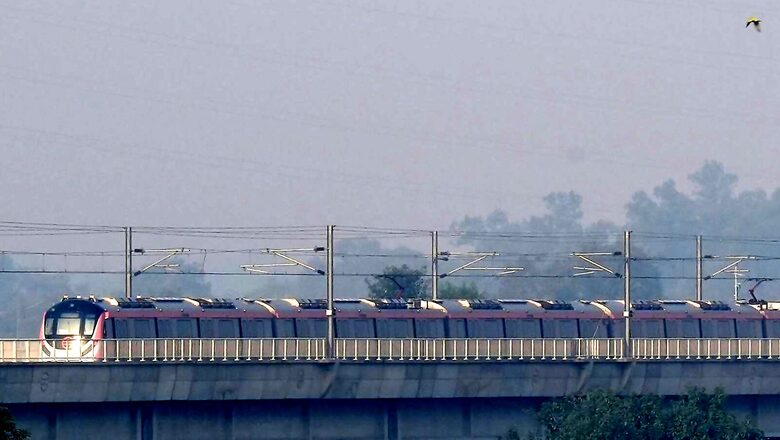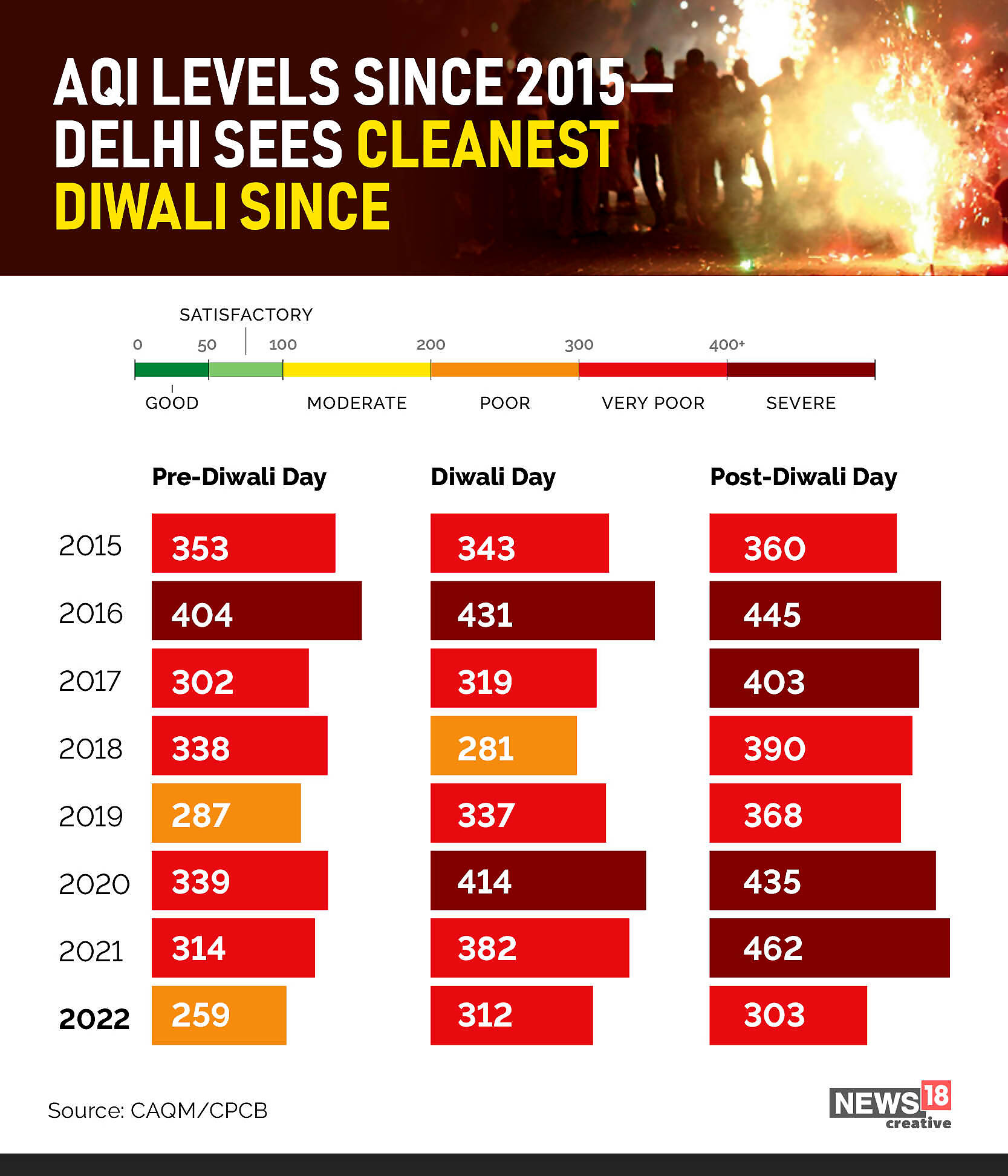
views
With AQI at 305 (very poor) Wednesday morning, Delhi is witnessing the “cleanest” post-Diwali air since 2015, largely owing to winds, warm conditions, fewer farm fires around the festival, which, unlike previous years, did not allow pollution to increase this year, according to the reports released by central and state pollution watchdogs.
Even though pollution monitoring agencies said bursting of firecrackers was reported from Delhi-NCR, constant winds blew away the smoke, allowing dispersion.
According to the Central Pollution Control Board (CPCB), Delhi’s average air quality index (AQI) on Tuesday (day after Diwali) was 303 in the lower-end of ‘very poor’ zone. This is a reduction of 30% in overall pollution levels as compared to that of last year when post Diwali (November 5), the AQI was 462 in the higher end of the ‘severe’ zone, a comparative analysis of Diwali air quality by the Delhi Pollution Control Committee (DPCC) stated.
In 2020, the post-Diwali day AQI was 435 (severe), while in 2019 it was 368 (very poor), and in 2018 and 2017, the AQI was 390 (very poor) and 403 (severe). The year 2016 saw the worst of all year with the AQI reaching 445 (severe) while in 2015 it was 360 (very poor).

Every year after Diwali, Delhi sees an annual air pollution crisis with major firecrackers bursting across NCR, despite a blanket ban being in place, acting as a trigger to already ripe conditions owing to farm fires and adverse meteorology.
However, the DPCC report said a host of factors worked rather in favour of Delhi this year despite cracker bursting. One is that the festival came early this year (in October instead of November) when its relatively warmer and the typical winter stagnating conditions that trap pollution does not exist.
Second, farm fires in neighbouring states, especially in Punjab, which is the largest paddy-growing state, saw a major reduction from last year on the day of Diwali.

The report pointed out that Delhi breathed easier this year on Diwali with a 56% reduction in crop stubble burning events in Punjab this year compared to 2021.
“Better meteorological conditions with respect to wind speed of 6-8 kmph with clear sky and moderate conditions for dispersion of pollutants despite unfavourable wind direction — north-westerly,” it said.
Relatively higher temperatures varying between 15 degrees Celsius and 36 degrees C this year was a major factor that didn’t allow pollutants to stagnate. In 2021, the temperature observed was 10 degrees Celsius to 33 degrees Celsius. Also, bursting of firecrackers was less this year as against previous year, which could also be an important reason, but could not be quantified yet, the report said.
“Even though trans-boundary movement of crop stubble burning in Punjab and other states picked up over the past three days, the total incidents were fewer than last year. This is mainly due to delayed harvest because of unseasonal rains earlier this month and are likely to rise further and hence situation needs to be watched closely,” said an official, who didn’t wish to be named.
According to the report, compared to last year’s post-Diwali day, this time, the average PM 2.5 and PM 10 concentrations — most prominent pollutants in Delhi’s air — reduced by 64% and 57%.
While all monitoring stations saw low PM 2.5 levels, the minimum reduction was observed at Patparganj (21%) and maximum at Mandir Marg (80%). In terms of PM 10 levels, minimum reduction was seen at Okhla (20%) and maximum at Wazirpur (69%), the report added.
Read all the Latest India News here


















Comments
0 comment